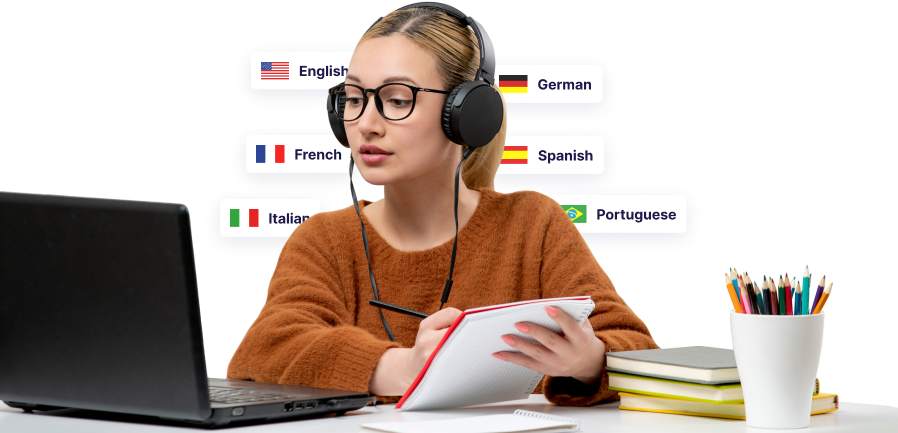Rapid Translate Team
Artificial Intelligence (AI) is becoming increasingly relevant in our everyday lives. AI tools are becoming more useful in human languages, including translation. Despite its growing popularity, there are some unclarities about AI translation technology.
AI language translation, also called machine translation, uses complex machine learning algorithms to provide automatic translations. These systems use natural language processing, neural networks, and algorithms in their operations.
This article discusses everything about this machine translation technology. So, keep reading to find out more.

Table of Contents
Can AI Translate Languages?
Yes, AI can translate languages; these tools have become more efficient over time, creating more accurate translations. In the past, AI tools created translated content that was unreliable, clunky, and full of inaccuracies.
This was mostly because of the frequent misinterpretations that generally accompanied some expressions and languages. The failure of these tools to translate these expressions, terms, and languages correctly resulted in some glaring errors.
However, recent developments accompanying AI technology have significantly boosted the translation industry. Noticeably, the translation quality from these tools has improved dramatically. Because of this, AI translates content that is accurate and grammatically correct.
Due to these improvements, communication between people of different language backgrounds has become easier. This development has also affected the demand for interpreters and linguists.
While using AI for translation is not always suitable, it is often a helpful alternative. Its increasing applicability has made it an attractive option if it needs to reach different people.
Fortunately, you can translate both written and spoken languages with AI. Translating these two aspects of languages has made it easier when it comes to large volumes of data. These translation tools also create ease when multiple languages are involved.
However, most AI tech only facilitates translations for global languages like English and Spanish. While there is a rush to spread these services across many other languages, they are still developing. It helps deal with language barriers in many aspects of human life.
Is Google Translate AI?
Is Google Translate AI? Yes! It’s AI that translates text and speech into different languages. It uses machine learning and neural networks to analyze text and translate it into other languages.
Google Translate’s AI feature learns patterns and relationships from tons of multilingual data. As it learns more, it improves, creating more accurate translations. This tool’s neural networks use other deep networks to create useful results.
Unlike the earlier modes of automatic translation that functioned using fixed parameters, Google Translate’s networks use adaptive models. Remember that the earlier translation technologies created literal translations that were often inaccurate. Conversely, this AI translates passages one sentence at a time.
The neural networks that form Google Translate’s systems learn from vast amounts of data. As a result, they studied how to provide translations in multiple languages. This neural machine translation feature allows the tool to translate while considering the context.
Since the tool trains on significantly large datasets, it does not only learn how to offer direct translations. It is also able to understand the context and nuances of different languages. Therefore, it also factors the language’s idiomatic expressions, slang, and colloquialisms.
Since the tool processes more information over time, it continuously improves. The addition of newer technology to the system also helps with its improvement.
For instance, speech and optical character recognition have helped this AI language translator’s effectiveness and applicability.

How To Use AI Translator: Effectively Working With AI Translation Software
There are multiple machine translators you can use for your projects. Since all translators have different designs, the question of how to use an AI translator depends on the tool you’re using. However, these translators mainly offer the same features.
Typically, they allow users to enter the text, video, audio, or photo they intend to translate. Then, they will enable the user to run the process and get results. In most cases, the real deal is choosing one that aligns with your needs.
Searching the language pairs that each option offers is a helpful step here. You must also know the content type that the translation service accepts.
So, here is how you can use these different translators:
- Choose the translation tool you intend to use and open the site or application.
- Sign in to the site or the app if it prompts you.
- Choose the type of content you’re translating. Many AI translation services accept plain text, documents, audio, and images, while others accept videos.
- Choose the source language and target language before inputting or uploading the source text or file.
- Hit the Enter button or wait for the tool to generate your results.
While these generic steps may help, you must also be able to follow the prompts from your AI translator.
Remember that some tools require subscription plans, but you can use some for free. Google Translate, DeepL, and Microsoft Bing Translator are some of the most useful free AI translators you’ll find.
The Best Free AI Translator in 2024
Many AI translation tools charge users for their services. These tools all have varying advantages and features.
However, you have many useful options, especially if you do not wish to pay a subscription fee.
So, here are the best free AI translators to consider in 2024:
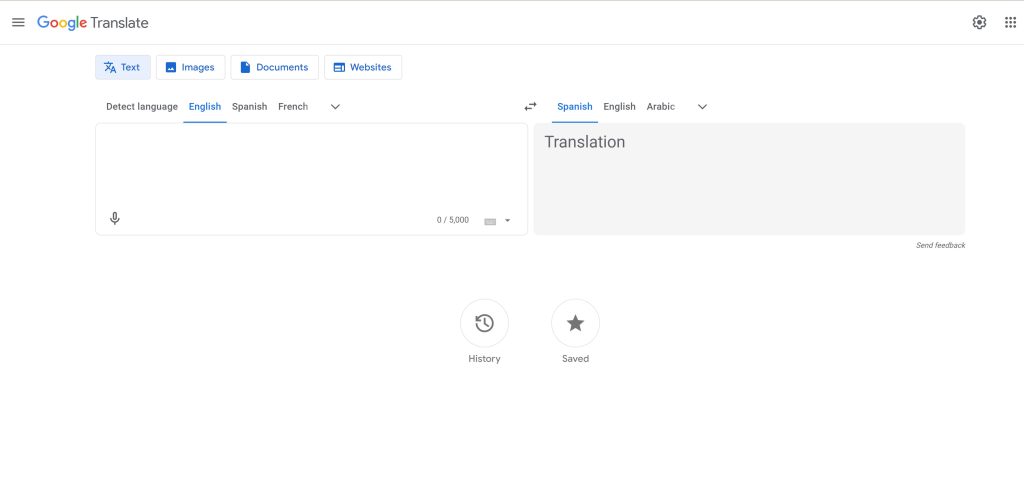
1. Google Translate
Google Translate is one of the earliest translation tools on the market, which has made it widely renowned among its peers. It is also popular for its significant coverage, as it supports over 100 languages. It can translate text, documents, websites, and audio from one language to another.
Besides being free, Google Translate is one of the most accessible translation software programs. Its simple and direct design allows users to perform operations quickly and seamlessly. Of course, Google’s sheer renown helps place this tool at the top of the pile.
You can get instant results by entering text in the allocated box or uploading the document or file. It also allows you to translate even moving images and text you’ve written by hand. Google Translate supports app integration and conversation mode if you’re using a mobile device.
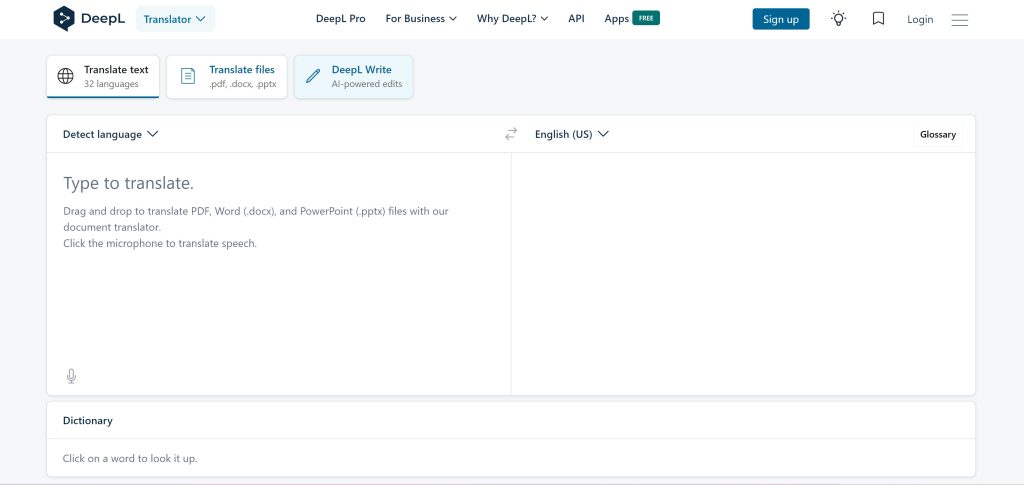
2. DeepL Translate
DeepL Translate is another free AI translation tool. It is becoming more popular among businesses and individuals. It is renowned for its accurate and nuanced translations.
DeepL Translate supports up to 32 languages and has a simple interface. It also allows users to integrate with their Windows and iOS devices conveniently.
In addition to entering text for translation, you can upload multiple document formats.
Despite being famous for high-quality translations, DeepL Translate sometimes creates inaccurate translations. Well, like other translation solutions, its system is constantly being improved.
Unfortunately, this translation technology does not offer customization options. However, it does have a useful website translation widget and encrypted cloud storage to compensate for this.
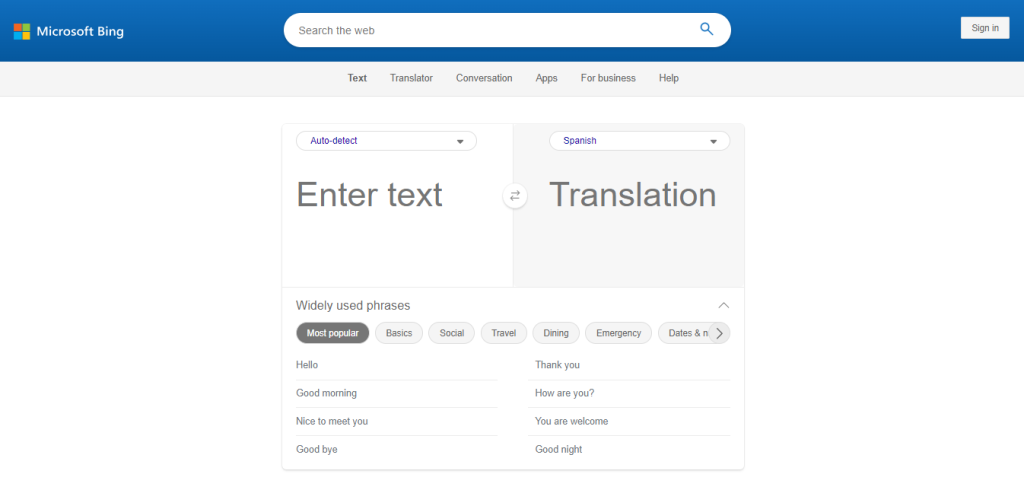
3. Microsoft Bing Translator
The Microsoft Bing Translator is another machine translation tool that has remained at the top of AI translation. Its popularity partly comes from Microsoft’s initial standing in AI development. Remember that it was among the first companies to include AI assistance in their search engines.
The company has integrated this option into Microsoft Bing, Office, Skype, Edge, Sharepoint, and Visual Studio. Microsoft offers speech and text translations through its cloud services for companies of all sizes.
The translator supports over 100 languages and 13 speech translation systems that allow live translation. This tool can translate text, images, and audio. The Microsoft Bing Translator has a translation memory and an app integration feature.
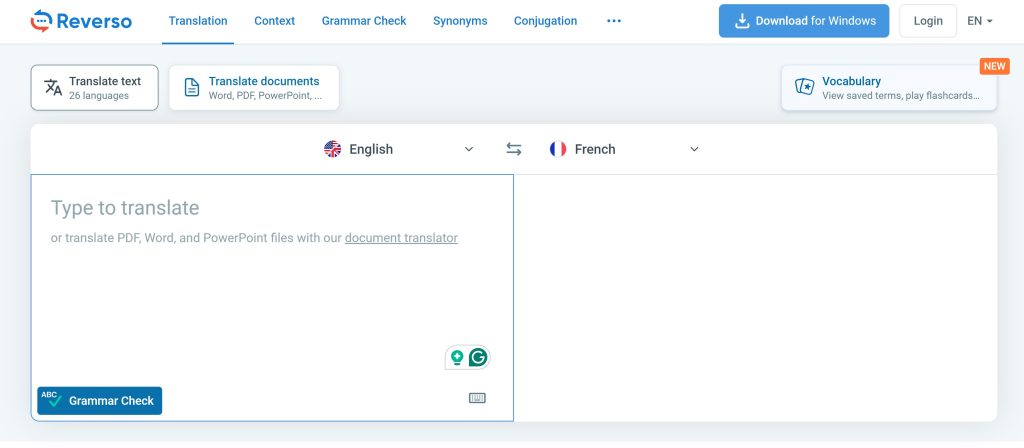
4. Reverso Translation
Reverso, a free AI tool for translation, supports 26 different languages. The tool allows users to input text or speech and upload PDF, Word, or PowerPoint files for translation.
However, Reverso does not only offer translation services. It allows users to check for grammatical errors in passages or find synonyms for specific words. The tool’s translation results typically include examples and explanations.
These explanations and examples help users upgrade their language skills and vocabulary.
There is also usually a guide on pronouncing certain words and helpful flashcards. Reverso provides a premium plan that offers several perks.
For instance, with premium, you can simultaneously translate longer text of up to 8,000 characters. You can also translate up to 50,000 words yearly while accessing the context, grammar check, synonyms, and conjugation features.
Choosing a Good AI Audio Translator
There are many AI audio translators, and all of these have different functionalities and features. While some of these translators only cover a few languages, others are more robust. Also, each tool typically offers a different outlook and user experience.
As a result, you must look out for certain things. First, consider the tool’s accuracy, especially in your source and target languages. Customer reviews and tests help with this.
It would help if you also considered its ease of use, storage options, and integration. Chat GPT, Google Bard, Parrot AI, and Notta fall into this category.

Using an AI Video Translator
Video translation is another area that has become more effective with AI. Instead of hiring language specialists and foreign actors, people now use AI video translator apps. Of course, they are cheaper, save time, and require only a few resources.
When choosing an option that works for you, you should consider the translator’s quality first. The translator’s sound quality is a big deal since it directly affects the listening and viewing experience. The language options, pricing, and other supported services are also crucial.
Rask AI, Speechify Video Translator, and Maestra AI are the most popular options. While they mostly use the same language models for their translations, they offer different features.
Although AI translation is helpful, it isn’t suitable for all documents or purposes. For this reason, it is sometimes necessary to go for human translators, especially for official document translation. In these situations, Rapid Translate comes in handy.
This translation service helps upgrade your global communications capabilities. It’s helpful whether you’re traveling abroad, making international friends, or running an offshore business. So, what are you waiting for? Order now to enjoy smooth communication!





